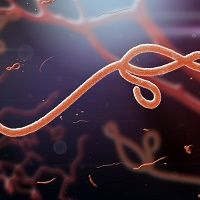Article
Ebola Virus 1976 vs. 2014: Which Strain Progresses Faster?
Author(s):
Although a recent study confirmed that the Ebola virus (EBOV) is no more or less deadly than it was 40 years ago, it has also been confirmed that its progression rate has changed.

Although a recent study confirmed that the Ebola virus (EBOV) is no more or less deadly than it was 40 years ago, it has also been confirmed that its progression rate has changed.
Researchers from the National Institutes of Health’s (NIH) National Institute of Allergy and Infectious Disease (NIAID) evaluated the 1976 EBOV-Mayinga and 2014 EBOV-Makona strains to identify potential differences. Lead author Andrea Marzi, PhD, and colleagues found that the latest outbreak progresses at a slower rate than the first strain that was discovered in the 70’s.
“In fact, the new study suggest the current virus has a decreased ability to cause disease in their animal model compared to the 1976 strain,” the NIAID wrote in a news release.
The team infected 3 cynomolgus macaques with 1,000 PFU of Mayinga and another 3 with Makona. Both strains were generally similar when it came to the onset — by day 3 all of the animals were shedding virus. In addition, the blood chemistry, systemic host responses, and pathological changes were comparable. However, the major differences came into play over the course of the disease’s progression.
The groups divided when the Mayinga developed a rash on day 4 and Makona on day 6. Also, the Makona group didn’t experience liver damage until 2 days after the Mayinga. Furthermore, the Mayinga macaques became extremely ill on days 5 and 6 while the Makona didn’t display the same until days 7 and 8. These were also the days that the animals reach their critical clinical scores for euthanasia.
“The most striking difference was observed for [interferons] IFN-y; a >300% increase was observed in EBOV-Makona-infected animals at the time of euthanasia,” the authors informed on the Centers for Disease Control and Prevention.
This level spike was not found in the Mayinga macaques even though that EBOV strain proved to progress more rapidly. Since the Mayinga group did not survive a full week, this finding suggest that at least 7 days are needed for the T cells — the main source of IFN-y – to activate. Although the progression EBOV varied between the groups, the fact that both strains were lethal explains why multiple other aspects of the disease were similar.
“The case-fatality rate in humans in the current outbreak in West Africa (≈50%) does not seem nearly as high as that reported for the initial 1976 outbreak in the former Zaire (now Democratic Republic of the Congo) (≈90%),” the statement concluded. “Which suggests lower virulence of this new strain from West Africa.”


